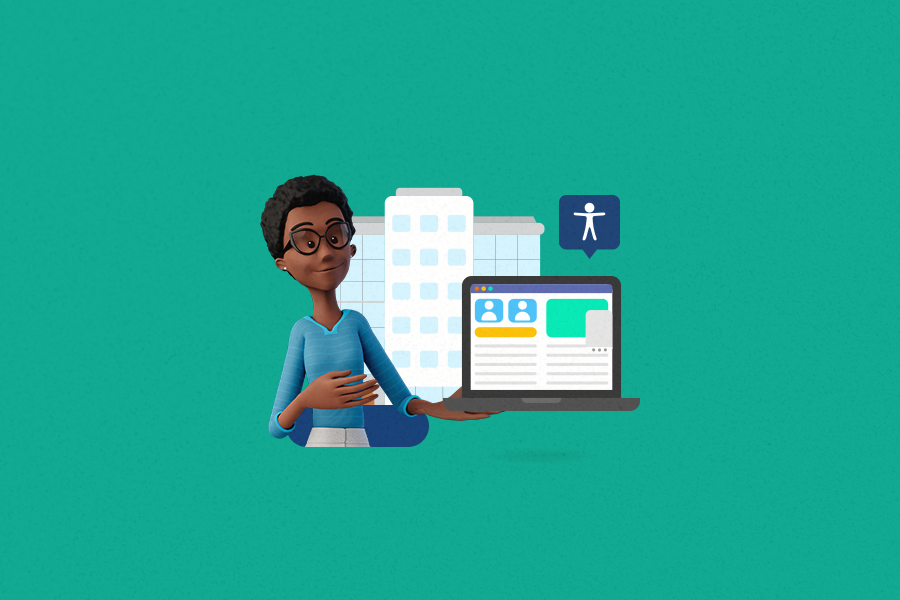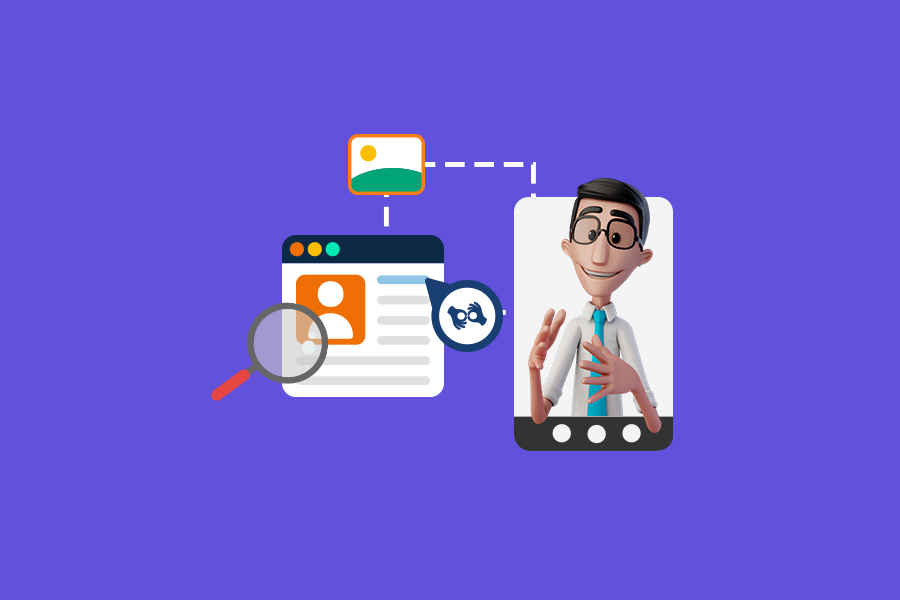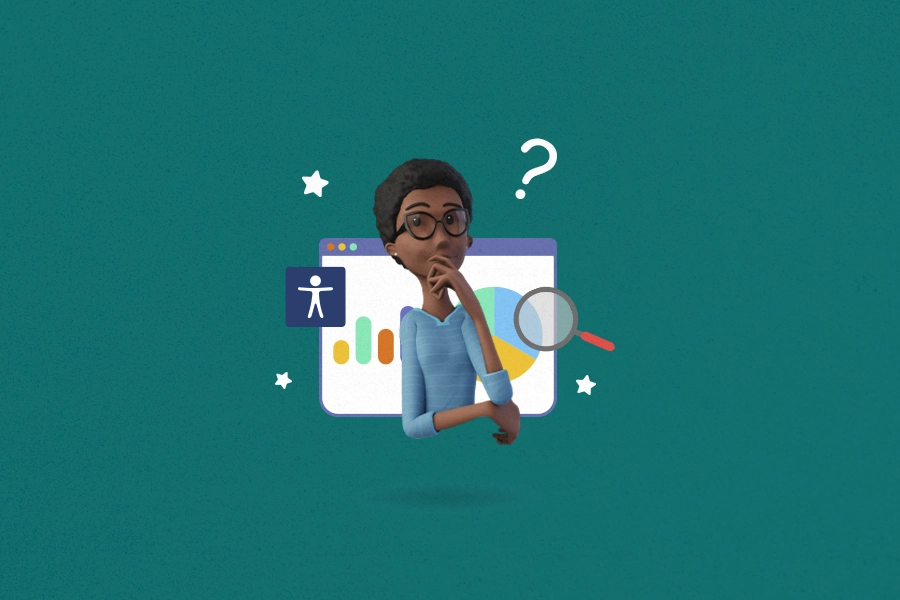
Digital accessibility in companies: challenges and opportunities

In the constantly evolving digital universe, accessibility should become a priority for companies aiming to offer inclusive experiences to all users. Digital accessibility experts emphasize the importance of adapting to a diverse market, investing in accessible tools, and promoting cultural changes that value inclusion.
We know that there is still a long way to go in building a truly accessible culture in our country. Whether we like it or not, companies play a fundamental role in this mission. With that in mind, how about we explore the scenario of digital accessibility in companies? Understand the main challenges and opportunities, aside from learning what the American market expects for the future.
What is digital accessibility in companies?
We have talked a lot about digital accessibility here on the Hand Talk blog, but it is always good to remember what it is all about! It refers to the practice of making products, services, and online content accessible to all people, regardless of their abilities or limitations.
This includes ensuring that websites, apps, and platforms are usable by individuals with visual, auditory, motor, and intellectual disabilities. Digital accessibility is essential so that all people, even those without disabilities, have access to information and daily activities with autonomy and independence, in an equitable manner.
What is the importance of digital inclusion for organizations?
Did you know that, besides being an ethical attitude, digital inclusion is also a smart business strategy? Companies prioritizing digital accessibility not only fulfill a moral duty but also open doors to a significant market of approximately 61 million people in the United States. Organizations promoting inclusive experiences build stronger bonds with customers and establish a positive reputation.
Overall, organizations implementing digital accessibility stand out for innovation and a commitment to equity. These companies not only comply with the law but actively seek ways to improve the experience for users of their products and services, regardless of their abilities.
Challenges and opportunities when hiring digital accessibility services
As mentioned, there is still a growing culture in the United States regarding accessibility practices in companies. Because of this, there are still not well-defined processes for how to hire external digital accessibility services or implement them internally. Each organization has its own workflow and team structure, and many accessibility professionals are still adapting.
Without further ado, understand which are the main challenges and opportunities when it comes to implementing digital accessibility!
Digital accessibility: main challenges for companies
Implementing digital accessibility is a task that still faces various challenges, from awareness to effective integration of teams into business processes.
Many organizations do not fully recognize the extent of barriers users may face. Additionally, lack of knowledge about accessibility best practices and resistance to change are significant obstacles.
Digital accessibility: main opportunities for companies
On the other hand, where there are challenges, there are also countless opportunities. Companies investing in this aspect gain competitive advantages, reach broader audiences, and demonstrate corporate social responsibility.
Furthermore, accessibility-oriented innovation often results in solutions benefiting all users, both those with permanent disabilities as well as those with temporary disabilities or situational limitations.
What are the main needs of users who depend on assistive tools?
To meet the specific needs of users who depend on assistive tools, here are some solutions companies should consider:
Good content structure
Offering support and device control options through voice commands is extremely useful for people with visual disabilities, along with integrating speech recognition technologies.
However, the primary assistive need for those with visual disabilities or blindness is to find websites with a good content structure for screen readers to work effectively. Producing content with alternative image descriptions is also a great practice.
Visual layout adjustments on websites
This is the main assistive demand for people with intellectual disabilities. Also, it is super important for those with color blindness.
Therefore, always keep in mind to avoid relying solely on color codes to convey information. It is also beneficial to use high-contrast color combinations to provide a message with fewer barriers.
Specialized assistance for people with disabilities
Regardless of whether your company deals directly with customers or sells products and services to other organizations, ensuring specialized assistance for people with disabilities is essential. Think of it as being useful for both customers and your internal team.
Moreover, this is one of the main assistive needs for people with physical disabilities or motor limitations.
Automatic Sign Language translators
We could not leave out the needs of deaf individuals and those with hearing disabilities, could we? A great initiative to include the deaf community in your company is to ensure access to information in Sign Languages.
To translate texts and images with alt text into ASL, American Sign Language, rely on the Hand Talk Plugin, a tool for automatic translation through Artificial Intelligence.
What can companies do for digital inclusion?
In addition to meeting users’ specific needs, companies can promote digital inclusion by:
- Developing internal training on digital accessibility;
- Participating in social responsibility initiatives;
- Adopting internal policies that encourage inclusive practices.
The average financial investment that organizations make in this area varies depending on the size and complexity of operations. However, it is crucial to consider this as a strategic investment in the company’s future.
Oh, and do not forget: it is always worth more counting on digital accessibility experts rather than relying 100% on automated tools.
How to hire digital accessibility services for your company?
When seeking digital accessibility services, companies often invest in assistive tools that meet the varied needs of users. Some of the most purchased tools include:
Most purchased tools by companies
- Screen readers: facilitate navigation for users with visual disabilities;
- Voice systems: enable interactions through voice commands;
- Visual contrast tools: assist users with low vision or color blindness;
- Captioning or automatic translation software: enhance accessibility for deaf users and those with hearing disabilities.
These tools, when integrated efficiently, contribute to a more inclusive digital experience!
What can the American market expect for the future of digital accessibility in companies?
In the American scenario, we can expect an increase in awareness and adoption of digital accessibility practices. As more companies recognize the benefits of digital inclusion, the trend is that the demand for specialized services will grow.
ESG guidelines are also a factor that should positively influence the adoption of accessible practices in organizations. After all, this is already a movement we are observing in Europe, which can influence American behavior in the near future.
Conclusion
Digital accessibility experts agree that inclusion is the path to the future of online businesses. Challenges exist, but opportunities outweigh barriers.
By prioritizing digital accessibility, companies not only fulfill an important social role but also build a solid foundation for growth and innovation. This is a continuous commitment that not only meets present needs but prepares the ground for a truly inclusive digital future.
Do you want to be part of this future? Learn more about the Hand Talk Plugin and how it can connect your company to millions of people.


